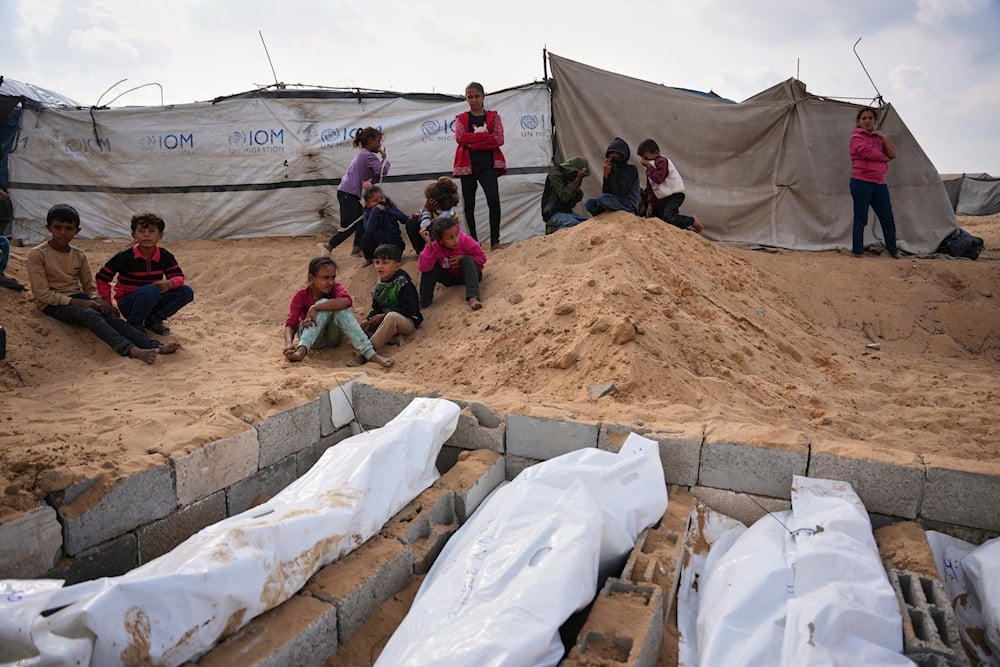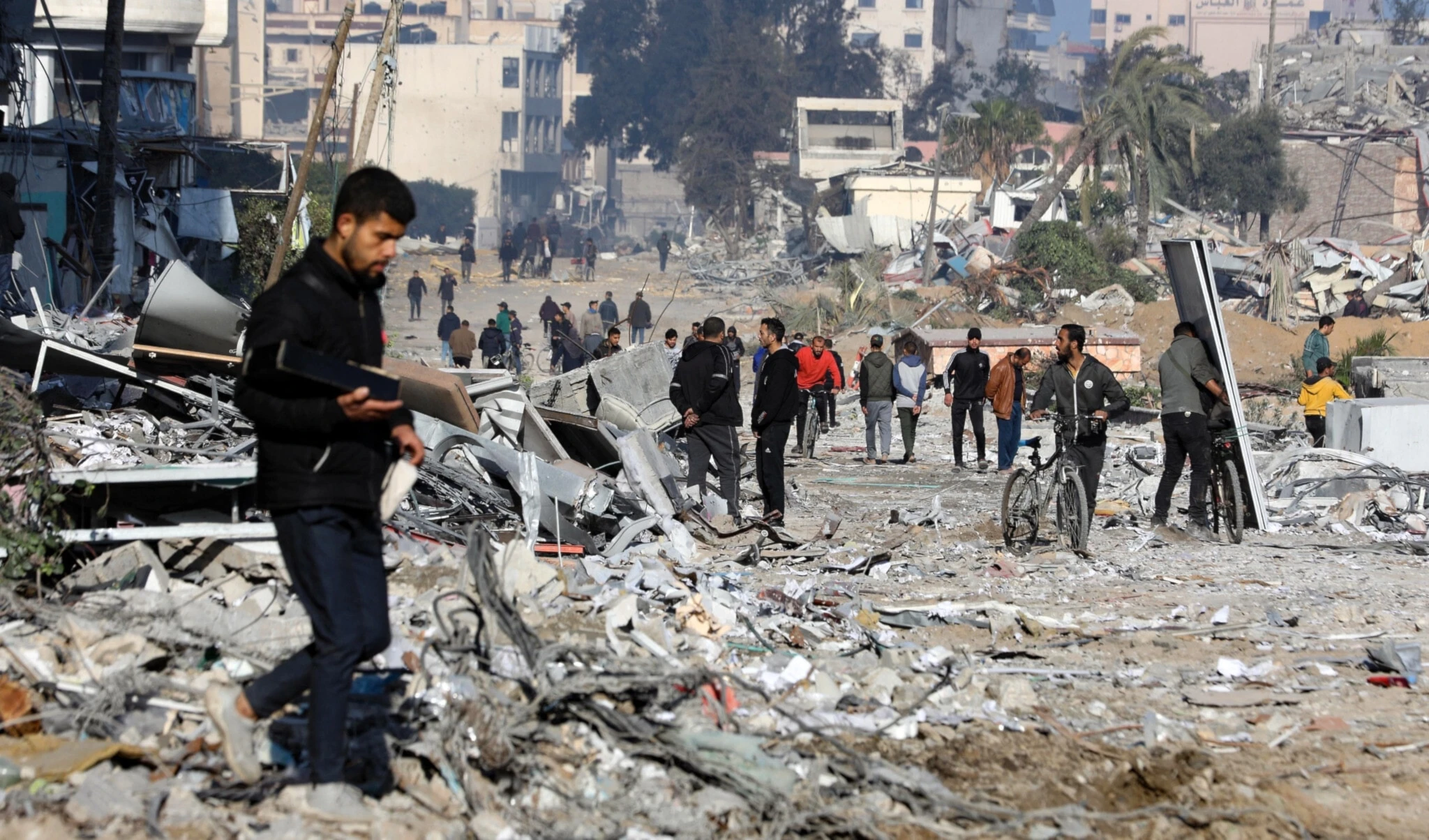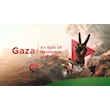Only 97 out of 330 Palestinian martyrs bodies received identified
Gaza receives 15 more martyr bodies as "Israel" continues attacks on refugee camps and neighborhoods in the Strip, in a flagrant violation of the declared ceasefire.
-

Children watch as bodies of unidentified Palestinians returned from Israel as part of the ceasefire deal are buried in Deir al-Balah, Gaza Strip, Friday, Nov. 14, 2025 (AP)
The Palestinian Ministry of Health announced it has received 15 bodies of martyrs released by the Israeli occupation on Friday through the Red Cross, bringing the total number of bodies received to 330.
So far, authorities have been able to identify 97 of the 330 bodies, and medical teams in Gaza continue to handle the remains according to established protocols, carrying out examinations and documentation before returning them to their families.
Israeli violations ongoing
Meanwhile, Israeli military vehicles fired live rounds toward the eastern perimeter of the al‑Bureij refugee camp in central Gaza, continuing hostilities despite the declared ceasefire.
In the al‑Shati refugee camp to the west of Gaza City, a Palestinian woman was seriously injured after the wall of her home, already damaged by earlier Israeli bombardment, collapsed. Meanwhile, Israeli attack helicopters struck the southern city of Rafah.
Earlier this morning, Gaza City came under heavy shelling: artillery targeted the eastern al-Shuja’iya neighborhood, while an Israeli drone launched an assault on areas in eastern Jabalia camp, in the north of the Gaza Strip.
This comes as Palestinians face dire conditions in the Strip, with heavy rainfall flooding tense housing families in refugee camps.
Gaza drowns in rainfall amid lack of proper shelter
Earlier, Gaza’s Civil Defense warned that heavy rainfall flooded dozens of tents housing forcibly displaced families in the al-Mawasi coastal area near Khan Younis, worsening already precarious living conditions.
The agency reported that emergency teams are “responding to dozens of waterlogged tents in displacement camps across multiple areas of al-Mawasi in Khan Younis,” as families struggle to salvage what remains of their belongings.
On November 14, Civil Defense officials confirmed they received continuous distress calls from early morning as tents collapsed and were inundated by rain across camps and shelters in several locations. The hardest-hit areas included Gaza City’s al-Nafaq, al-Daraj, al-Yarmouk, al-Zaytoun, and al-Shati refugee camps.
The situation was equally critical in the central governorate, including al-Baraka and al-Bassa in Deir al-Balah, near the Islamic Bank on Salah al-Din Street, west of the al-Bureij camp, as well as displacement sites around the Nuseirat market area.
With winter conditions setting in and infrastructure devastated by months of bombardment, civil defense authorities called for immediate international intervention. They specifically urged countries involved in Gaza ceasefire negotiations to address the humanitarian crisis affecting nearly half a million families uprooted by what they described as Israel’s “ongoing war of extermination.”

 3 Min Read
3 Min Read










